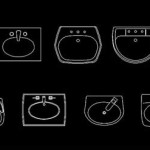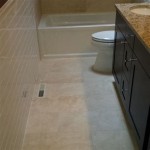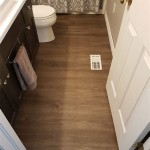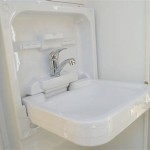Ensuring Bathroom Privacy: A Guide to Securing the Door
Maintaining privacy in the bathroom is a fundamental aspect of comfort and respect within any shared living space. This guide outlines various methods for securing a bathroom door, catering to different door types and circumstances.
The most common method involves a built-in privacy lock. This mechanism is typically integrated into the door handle or doorknob assembly. A small button or lever on the interior side of the door activates the lock, preventing the door from being opened from the outside. To unlock, one simply rotates the interior handle or depresses the button/lever again.
Variations exist in privacy lock designs. Some feature a small emergency release slot on the exterior side. This allows access in case of emergencies, typically by inserting a thin, flat object like a coin or a screwdriver into the slot and turning or pushing. Familiarity with the specific lock mechanism on the bathroom door is recommended.
For doors without built-in privacy locks, a portable door lock can offer a practical solution. These devices are typically compact and easily installed without requiring any permanent modifications to the door or frame. Several types of portable locks are available, each with its own installation method.
One common portable lock design utilizes a wedge-shaped piece of rubber or plastic. This wedge is inserted into the gap between the door and the floor, creating sufficient friction to prevent the door from opening. These are particularly effective on hard floors but may be less reliable on carpets or uneven surfaces.
Another portable option is the hook-and-eye lock. This comprises two components: a hook mounted on the door and an eye latch attached to the door frame. When engaged, the hook fits into the eye latch, securing the door. While relatively simple to install, these locks require accurate alignment of the hook and eye for proper functionality.
A more robust portable option is the door chain or guard. This type of lock consists of a chain or bar attached to the door and a catch mounted on the door frame. The chain or bar allows the door to be opened slightly for communication while still maintaining a level of security. This is beneficial for scenarios where complete isolation is not required, such as when interacting with children or receiving deliveries.
For situations requiring a higher level of security, a deadbolt lock can be considered. Deadbolts provide superior resistance to forced entry compared to standard privacy locks. Installation typically requires professional assistance and modifications to the door and frame. A deadbolt is a more permanent solution and may not be suitable for all scenarios.
Another, less common option for enhancing privacy involves placing a physical barrier against the door. This might include a chair or other heavy furniture. While this can provide a temporary solution, it is generally not recommended as a long-term strategy due to its inconvenience and potential for damage to the door or furniture.
Beyond these physical methods, ensuring bathroom privacy also involves etiquette and communication within the household. Establishing clear signals, such as knocking before entering or utilizing a visual indicator like a "Do Not Disturb" sign, can further enhance privacy and prevent accidental intrusions.
Selecting the appropriate method for securing a bathroom door depends on several factors, including the existing door hardware, the level of security required, and the specific circumstances of the environment. Understanding the advantages and disadvantages of each method allows for informed decision-making and contributes to a more comfortable and respectful living space.
Regular maintenance and inspection of door hardware, including locks and hinges, are recommended to ensure continued functionality and security. Addressing any issues promptly can prevent inconveniences and maintain the desired level of privacy in the bathroom.
In summary, various options exist for securing a bathroom door, ranging from simple built-in locks to portable devices and more permanent solutions like deadbolts. Considering the specific needs and characteristics of the environment, combined with establishing clear communication within the household, contributes to a more private and comfortable bathroom experience.

How To Lock A Door Without 10 Brilliant Solutions Bob Vila

How To Lock A Door Without 10 Brilliant Solutions Bob Vila
How To Lock A Bathroom Door Without Drilling Or Spending Too Much Money Quora

Let S Add Sprinkles The Bathroom Door With No Lock

How To Unlock Bathroom Door If You Lose Your Privacy Lock Key The Smart Easiest Way
Let S Add Sprinkles The Bathroom Door With No Lock

How To Unlock A Bathroom Door Or Bedroom

Bathroom Door Lock Types A Helpful Guide With Images

Locked Out Of Your Bathroom 8 Ways To Unlock Door

Bathroom Door Lock Types A Helpful Guide With Images
Related Posts







